|
Books Should Be Free Loyal Books Free Public Domain Audiobooks & eBook Downloads |
|
|
Books Should Be Free Loyal Books Free Public Domain Audiobooks & eBook Downloads |
|
Top Authors |
|---|
|
Book type:
Sort by:
|
By: René Descartes (1596-1650) | |
|---|---|
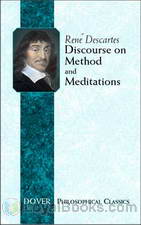 Discourse on the Method of Rightly Conducting One's Reason and of Seeking Truth in the Sciences
Discourse on the Method of Rightly Conducting One's Reason and of Seeking Truth in the Sciences
The Discourse on Method is best known as the source of the famous quotation “cogito ergo sum”, “I think, therefore I am.” …. It is a method which gives a solid platform from which all modern natural sciences could evolve. With this work, the idea of skepticism was revived from the ancients such as Sextus Empiricus and modified to account for a truth that Descartes found to be incontrovertible. Descartes started his line of reasoning by doubting everything, so as to assess the world from a fresh perspective, clear of any preconceived notions. | |
 A Discourse of a Method for the Well Guiding of Reason and the Discovery of Truth in the Sciences
A Discourse of a Method for the Well Guiding of Reason and the Discovery of Truth in the Sciences
| |
By: Washington Irving (1783-1859) | |
|---|---|
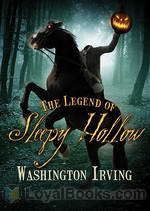 The Legend of Sleepy Hollow
The Legend of Sleepy Hollow
Set in the small secluded valley of Sleepy Hollow, Irving’s short speculative story follows the rivalry between Ichabod Crane and Brom Van Brunt for Katrina Van Tassel’s hand in marriage. Mostly inhabited by descendants from Dutch settlers, the residents are known for their belief in superstitions and the supernatural, and have many stories to suffice their colorful imaginations. The story begins when the scrawny schoolmaster Ichabod Crane from Connecticut moves to Sleepy Hollow for a teaching job and rotates living with the families of his students... | |
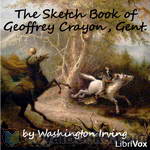 The Sketch Book of Geoffrey Crayon, Gent.
The Sketch Book of Geoffrey Crayon, Gent.
Apart from "Rip Van Winkle" and "The Legend of Sleepy Hollow" - the pieces which made both Irving and The Sketch Book famous - other tales include "Roscoe", "The Broken Heart", "The Art of Book-making", "A Royal Poet", "The Spectre Bridegroom", "Westminster Abbey", "Little Britain", and "John Bull". His stories were highly influenced by German folktales, with "The Legend of Sleepy Hollow" being inspired by a folktale recorded by Karl Musaus. Stories range from the maudlin (such as "The Wife" and... | |
 The Short-story
The Short-story
| |
 Old Christmas: From the Sketch Book of Washington Irving
Old Christmas: From the Sketch Book of Washington Irving
Washington Irving's Old Christmas tells of an American's travels through England during the Christmas season. Through a chance meeting with an old friend he is able to experience Christmas in a stately manor house. Through his eyes as a houseguest he glimpses the uniquely British customs and celebrations of Christmas as it would have been experienced during the Middle Ages, rather than in the early 19th century. | |
 Knickerbocker's History of New York, Vol. 1
Knickerbocker's History of New York, Vol. 1
Washington Irving, an author, biographer, historian, and diplomat, completed his first major work, a satire of contemporary local history and politics entitled A History of New-York from the Beginning of the World to the End of the Dutch Dynasty, by Diedrich Knickerbocker in 1809. Prior to its publication, Irving started a promotional hoax (not unlike some modern-day publicity stunts?) by placing fake missing persons advertisements in local newspapers asking for help in locating Diedrich Knickerbocker... | |
 Chronicle of the Conquest of Granada
Chronicle of the Conquest of Granada
| |
 The Life and Voyages of Christopher Columbus (Volume II)
The Life and Voyages of Christopher Columbus (Volume II)
MANUAL OF SURGERY, OXFORD MEDICAL PUBLICATIONSBY ALEXIS THOMSON, F.R.C.S.Ed.PREFACE TO SIXTH EDITION Much has happened since this Manual was last revised, and many surgical lessons have been learned in the hard school of war. Some may yet have to be unlearned, and others have but little bearing on the problems presented to the civilian surgeon. Save in its broadest principles, the surgery of warfare is a thing apart from the general surgery of civil life, and the exhaustive literature now available on every aspect of it makes it unnecessary that it should receive detailed consideration in a manual for students... | |
 Bracebridge Hall, or The Humorists
Bracebridge Hall, or The Humorists
| |
 Little Britain
Little Britain
| |
 Life of George Washington — Volume 01
Life of George Washington — Volume 01
| |
 Oliver Goldsmith A Biography
Oliver Goldsmith A Biography
| |
 The Crayon Papers
The Crayon Papers
| |
 Wolfert's Roost and Miscellanies
Wolfert's Roost and Miscellanies
| |
 The Student's Life of Washington; Condensed from the Larger Work of Washington Irving For Young Persons and for the Use of Schools
The Student's Life of Washington; Condensed from the Larger Work of Washington Irving For Young Persons and for the Use of Schools
| |
By: Franz Kafka (1883-1924) | |
|---|---|
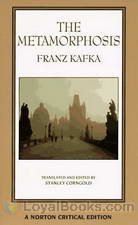 The Metamorphosis
The Metamorphosis
“One morning Gregor Samsa woke from anxious dreams to find himself transformed into a disgusting insect...” Thus opens one of the most famous books of the twentieth century, The Metamorphosis by Franz Kafka. Published in 1915, The Metamorphosis is written originally in German. It is a brief but extremely thought provoking novella. Readers and writers have termed it one of the most influential works of the century and hailed Kafka as the creator of a new form in literary tradition. Today, the book has been studied, analyzed and researched extensively by teachers, students and psychologists... | |
By: Robert Frost (1874-1963) | |
|---|---|
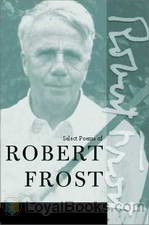 Selected Poems
Selected Poems
“Good fences make good neighbors...” If, as a reader, this is one line you do remember, then the poet Robert Frost would have fulfilled his purpose. The highest goal of a poet, he claimed, was to “lodge a few poems where they would be hard to get rid of...” Unforgettable lines and indelible memories are connected with our encounters with America's best-loved and most popular poet. His wonderful pictures of rural life and the deeply philosophical insights they offer remain with us long after many others have faded... | |
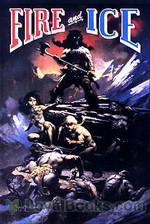 Fire and Ice
Fire and Ice
Written by one of the most significant American poets, Fire and Ice proficiently tackles the continuous query about how the world will cease to exist, whether it will go up in flames, or succumb to the cruelty of ice. First published in Harper’s Magazine in 1920 and later included in his acclaimed anthology New Hampshire, Frost effectively employs the use of simple, yet evocative language that assigns each syllable a significant purpose in the poem, while simultaneously concentrating on a perplexing topic... | |
 North of Boston
North of Boston
One of the first collections of poetry by Robert Frost, published in 1914.The Fear (00:00:16)The Self-seeker (00:05:27)The Wood-pile (00:16:35)Good Hours (00:18:47) | |
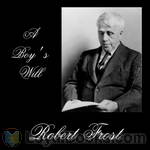 A Boy's Will
A Boy's Will
Robert Frost preferred to describe the New England countryside using everyday language. He used both as tools to explore world views and life philosophies. A Boy's Will was his first poetry anthology. | |
By: Victor Appleton (1873-1962) | |
|---|---|
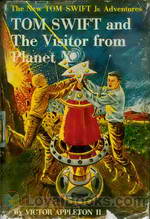 Tom Swift and the Visitor From Planet X
Tom Swift and the Visitor From Planet X
If you haven't come across the 200-book series about Tom Swift Jr, this book would be an interesting one to start with. The series is aimed at the young adult readership, probably male, and the young adolescent hero, Tom Swift Jr is the son of Tom Swift Sr. The books portray the perennially 18-year-old Tom, a tall and angular youngster, possessed of a very high intelligence and presence of mind. Regular characters include his parents, younger sister Sandy, best buddy Bud Barclay, his regular date Phyllis Newton, and the comic roly-poly Chow Winkler... | |
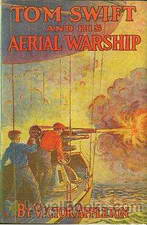 Tom Swift and His Aerial Warship, or, the Naval Terror of the Seas
Tom Swift and His Aerial Warship, or, the Naval Terror of the Seas
Tom Swift is an inventor, and these are his adventures. The locale is the little town of Shopton in upstateNew York, near Lake Carlopa. While some of Tom’s inventions are not well-founded in a scientific sense, others elaborated developments in the news and in popular magazines aimed at young science and invention enthusiasts. Presenting themselves as a forecast of future possibilities, they now and then hit close to the mark. Some predicted inventions that came true include “photo telephones”, vertical takeoff aircraft, aerial warships, giant cannons, and “wizard” cameras... | |
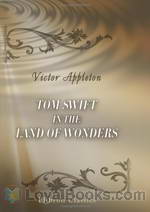 Tom Swift in the Land of Wonders
Tom Swift in the Land of Wonders
Tom Swift is the young protagonist in a series of juvenile adventure novels which began in the early twentieth century and continue to the present. Tom Swift is a genius inventor whose breakthroughs in technology (especially transport technology) drive the plots of the novels, placing them in a genre sometimes called “invention fiction” or “Edisonade”. This book is the 20th in the original series published from 1910 -1942, written by a ghost writer using the name of Victor Appleton. This adventure takes Tom and his cohorts to Honduras in search of a Mayan idol of gold. | |
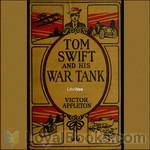 Tom Swift and His War Tank
Tom Swift and His War Tank
Tom Swift, that prolific youthful inventor, is engaged in trying to help the Allies win WWI. After reading newspaper accounts of the British tanks, Tom takes a sheet of paper and sets out to design a better one from scratch. And fortunately, he can throw the whole family business behind his venture. He has two problems: First, his friends and acquaintances are questioning his patriotism because he hasn’t enlisted as a rifleman for the front lines. Even his girl is worried his blood isn’t true-blue... | |
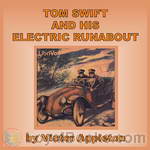 Tom Swift and his Electric Runabout
Tom Swift and his Electric Runabout
Tom Swift enters an upcoming race with his specially-designed prototype electric race car. But as he makes the final preparations and adjustments, days before the race, he discovers a plot that would bankrupt not only his family, but also everyone else that relies on the local bank (which is the target of a nefarious bank-run scheme). Tom must solve the mystery and stop the criminals behind the plot before he’ll test himself on a 500 mile race against some of the best electric cars and skilled drivers in the United States... | |
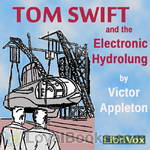 Tom Swift and the Electronic Hydrolung
Tom Swift and the Electronic Hydrolung
The US Government is very smartly letting Tom Swift Jr. handle the recovery of its probe to Jupiter. But a mystery missile suddenly intercepts the probe and splashes it in the South Atlantic.Faced with a huge search task to find the probe on the ocean bottom, Tom soon realizes that the same shadowy group that attacked the probe is competing to find it, and no holds are barred: kidnap, coercion, and lethal force are all in play.Under such circumstances, what can Tom do? What he does every time, of course! He invents some utterly cool device to get the job done! And his Electronic Hydrolung is just the beginning! | |
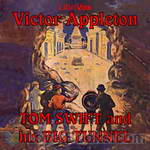 Tom Swift and His Big Tunnel
Tom Swift and His Big Tunnel
The Titus Brothers Contractors company have won a government contract in Peru to blast a tunnel through a mountain and connect two isolated railroad lines. The deadline is approaching, and the contractors have hit a literal wall: excessively hard rock which defies conventional blasting techniques. The company is under pressure to finish, or else the contract will default to their rivals, Blakeson & Grinder. Mr. Job Titus has heard of Tom Swift and Tom's giant cannon, which is used in protecting the Panama Canal, and wants to hire Tom to develop a special blasting powder to help them finish the excavation... | |
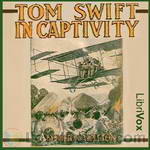 Tom Swift in Captivity
Tom Swift in Captivity
Tom Swift is approached by Mr. Preston, the owner of a circus, and begins to tell the story of Jake Poddington, Mr. Preston's most skilled hunter. As it turns out, Jake went missing just after sending word to Preston that Jake was on the trail of a tribe of giants, somewhere in South Africa. That was the last Preston has heard of Jake Poddington. Preston would like Tom to use one of his airships to search for Poddington, and if possible, bring back a giant for the circus.Listeners are forewarned that some elements and characters included in Tom Swift books portray certain ethnic groups in a very dated manner that modern readers, and listeners, may find offensive... | |
By: Immanuel Kant (1724-1804) | |
|---|---|
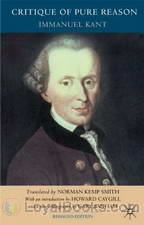 The Critique of Pure Reason
The Critique of Pure Reason
The Critique of Pure Reason, first published in 1781 with a second edition in 1787, has been called the most influential and important philosophical text of the modern age. Kant saw the Critique of Pure Reason as an attempt to bridge the gap between rationalism (there are significant ways in which our concepts and knowledge are gained independently of sense experience) and empiricism (sense experience is the ultimate source of all our concepts and knowledge) and, in particular, to counter the radical empiricism of David Hume (our beliefs are purely the result of accumulated habits, developed in response to accumulated sense experiences)... | |
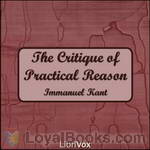 The Critique of Practical Reason
The Critique of Practical Reason
The Critique of Practical Reason (Kritik der praktischen Vernunft) is the second of Immanuel Kant’s three critiques, first published in 1788. It follows on from his Critique of Pure Reason and deals with his moral philosophy. The second Critique exercised a decisive influence over the subsequent development of the field of ethics and moral philosophy, becoming the principle reference point for ethical systems that focus on the rightness or wrongness of actions themselves, as opposed to the rightness or wrongness of the consequences of those actions... | |
 Perpetual Peace: A Philosophic Essay
Perpetual Peace: A Philosophic Essay
This essay, written in 1795, puts forth a plan for a lasting peace between nations and peoples. Kant puts forth necessary means to any peace, and argues that nations can be brought into federation with one another without loss of sovereignty. In one translation, telling of the historical impact of this essay, this federation is called a “league of nations.” The supplements and appendices are of considerable interest on their own. The supplements contain an argument regarding the use which nature makes of war, and the way in which nature, in the end, impels us towards peace... | |
 On the Popular Judgment: That may be Right in Theory, but does not Hold Good in the Praxis
On the Popular Judgment: That may be Right in Theory, but does not Hold Good in the Praxis
This tripartite essay, published variously as On the Popular Judgment (J. Richardson trans.), On the Old Saw (E.B. Ashton trans.), or On the Common Saying (both M.J. Gregor and H.B. Nisbet), Kant takes up the issue of the relation of theory to practice in three distinct ways. In the first, he replies to Christian Garve’s criticism of his moral theory, in the second, he distances himself from Thomas Hobbes, and in the third, Moses Mendelssohn. The three taken together are representative of the breadth of Kant’s moral and political thought; the first section being concerned with the individual, the second with the state, and the third with the species... | |
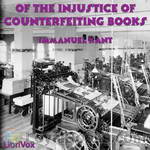 Of the Injustice of Counterfeiting Books
Of the Injustice of Counterfeiting Books
This essay of Kant’s on copyright argues that the unlicensed copying of books cannot possibly be permissible, due to the fact that it assumes a consent on the part of the author which it is logically impossible for the author to give. The argument is dependent upon an assumption that the writings be commodified, for the reason why the author is unable to possibly give consent to multiple publishers is due to the author’s will – to communicate with the public – necessitating the profitability of the publisher, for, it is assumed, there is no way to communicate with the public at large without a great expense which can only be borne by a publishing firm... | |
 The Metaphysical Elements of Ethics
The Metaphysical Elements of Ethics
| |
By: Jean Webster (1876-1916) | |
|---|---|
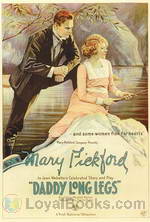 Daddy-Long-Legs
Daddy-Long-Legs
Jerusha Abbott, an eighteen year old orphan, faces an uncertain future in the charity home where she has lived all her life. On reaching adulthood, the orphanage can no longer offer shelter to its inmates. Her anxiety leads her into wild speculation when she is summoned to the matron's office. But a surprise awaits her. One of the visitors, a wealthy Trustee of the orphanage, has offered to fund Jerusha's college education and fulfill her dreams of becoming a writer. The only condition he makes is that he remain anonymous and that she write to him regularly about her progress... | |
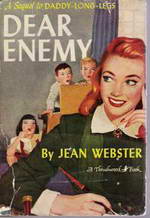 Dear Enemy
Dear Enemy
Dear Enemy is the sequel to Jean Webster’s novel Daddy-Long-Legs. The story as presented in a series of letters written by Sallie McBride, Judy Abbott’s college mate in Daddy-Long-Legs. Among the recipients of the letters are the president of the orphanage where Sallie is filling in until a new director can be installed, his wife (Judy Abbott of Daddy-Long-Legs), and the orphanage’s doctor (to whom Sallie addresses her letters: “Dear Enemy”). | |
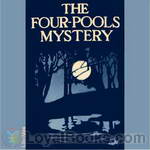 The Four-Pools Mystery
The Four-Pools Mystery
In The Four Pools Mystery the tyrannical plantation owner is deemed responsible for his own murder because of his mistreatment of the former slaves who continued in his employment after the war. Jean Webster (pseudonym for Alice Jane Chandler Webster) was born July 24, 1876 and died June 11, 1916. She was an American writer and author of many books including Daddy-Long-Legs and Dear Enemy. (Wiki) | |
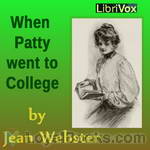 When Patty Went to College
When Patty Went to College
When Patty Went to College is Jean Webster's first novel, published in 1903. It is a humorous look at life in an all-girls college at the turn of the 20th century. Patty Wyatt, the protagonist of this story is a bright, fun loving, imperturbable girl who does not like to conform. The book describes her many escapades on campus during her senior year at college. Patty enjoys life on campus and uses her energies in playing pranks and for the entertainment of herself and her friends. An intelligent girl, she uses creative methods to study only as much as she feels necessary... | |
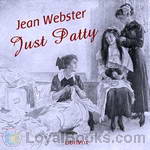 Just Patty
Just Patty
Patty, Conny, and Priscilla are the best of friends, and roommates at boarding school. While the teachers might say they are mischievous, even troublemakers, Patty and her friends act only in accordance with their convictions. From forming a labor union to furnishing a house for the neighbors, Patty's ideas are unconventional, yet loads of fun. Just Patty is the prequel to When Patty Went to College, the first novel by the author of Daddy-Long-Legs and Dear Enemy. | |
 Jerry
Jerry
Jerry is the humorous story of a young man's attempt to win his lady. Jerry is waiting for his friends at a hotel in Italy, and is bored and lonely. When he hears that a beautiful American lady, Constance Wilder, is staying nearby, he tries to visit her. After an awkward first meeting, he tries to catch her attention by pretending to be a peasant tour guide. She recognizes him for what he is, but pretends not to, and a lively charade is carried on as they tease and fall in love. A clean, sweet, funny historical fiction/romance. | |
 Jerry Junior
Jerry Junior
| |
By: Ralph Waldo Emerson (1803-1882) | |
|---|---|
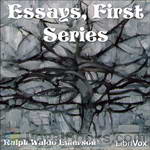 Essays, First Series
Essays, First Series
“I do not wish to treat friendships daintily but with roughest courage. When they are real, they are not glass beads or frost-work but the solidest thing we know....” is how Ralph Waldo Emerson saw the ties of friendship in one of his essays titled Friendship, more than a hundred years ago. This and other interesting essays are included in Essays First Series by Ralph Waldo Emerson, the distinguished American philosopher and writer. Apart from writing, he was also a very gifted and popular public speaker who toured the length and breadth of the country sharing his ideas with the larger public... | |
 Nature
Nature
“Nature” is a short essay by Ralph Waldo Emerson published anonymously in 1836. It is in this essay that the foundation of transcendentalism is put forth, a belief system that espouses a non-traditional appreciation of nature. Recent advances in zoology, botany, and geology confirmed Emerson’s intuitions about the intricate relationships of nature at large. The publication of “Nature” is usually taken to be the watershed moment at which transcendentalism became a major cultural movement... | |
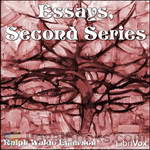 Essays, Second Series
Essays, Second Series
Ralph Waldo Emerson (1803 – 1882) was an American essayist, philosopher, and poet, best remembered for leading the Transcendentalist movement of the mid 19th century. His teachings directly influenced the growing New Thought movement of the mid-1800s. | |
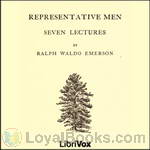 Representative Men
Representative Men
A series of biographical lectures originally published in 1850. Each chapter is a philosophical treatment of the life of an intellectual. The six representatives are Plato, Swedenborg, Shakespeare, Montaigne, Napolean and Goethe. (Introduction by S. Kovalchik) | |
 Essays by Ralph Waldo Emerson
Essays by Ralph Waldo Emerson
| |
 Poems Household Edition
Poems Household Edition
| |
 May-Day and Other Pieces
May-Day and Other Pieces
| |
By: Sigmund Freud (1856-1939) | |
|---|---|
 Dream Psychology
Dream Psychology
From the dawn of human consciousness, dreams have always fascinated us. Do they mean something? Do dreams help us see into the future? These questions have intrigued us for centuries. Sigmund Freud was one of the first people to examine dreams seriously and interpret them in the context of our waking lives. In Dream Psychology: Psychoanalysis for Beginners, the Austrian psychoanalyst, Dr Sigmund Freud shares his exciting early discoveries that there was indeed a connection between his patients' dreams and their mental disturbances... | |
 Reflections on War and Death
Reflections on War and Death
Anyone, as Freud tells us in Reflections on War and Death, forced to react against his own impulses may be described as a hypocrite, whether he is conscious of it or not. One might even venture to assert—it is still Freud’s argument—that our contemporary civilisation favours this sort of hypocrisy and that there are more civilised hypocrites than truly cultured persons, and it is even a question whether a certain amount of hypocrisy is not indispensable to maintain civilisation. When this... | |
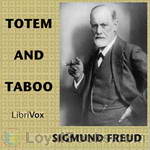 Totem and Taboo
Totem and Taboo
Totem and Taboo: Resemblances Between the Mental Lives of Savages and Neurotics is a book by Sigmund Freud, published in German in 1913. It is a collection of four essays first published in the journal Imago (1912–13), employing the application of psychoanalysis to the fields of archaeology, anthropology, and the study of religion. The four essays are entitled: The Horror of Incest; Taboo and Emotional Ambivalence; Animism, Magic and the Omnipotence of Thoughts; and The Return of Totemism in Childhood. | |
 Leonardo da Vinci A Psychosexual Study of an Infantile Reminiscence
Leonardo da Vinci A Psychosexual Study of an Infantile Reminiscence
| |
 Group Psychology and The Analysis of The Ego
Group Psychology and The Analysis of The Ego
| |
By: Saint Ambrose (337/340-397) | |
|---|---|
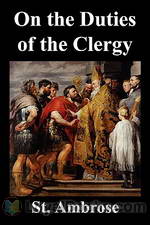 On the Duties of the Clergy
On the Duties of the Clergy
Aurelius Ambrosius was a fourth century cleric who rose to become the Archbishop of Milan in 374 AD. His father was a powerful Roman general and the prefect of Gaul. His brother and sister were also consecrated as saints by the Catholic Church. As an infant, a swarm of bees settled over his face and flew away without harming the baby, but left behind a drop of honey and this was seen as a sign of his future eloquence and bees are often painted in his portraits as his symbols. Ambrosius (or Ambrose as he is referred to in English) was a highly learned man, well versed in Latin and Greek, theology and many other subjects... | |
 Concerning Virgins
Concerning Virgins
Concerning Virgins (De Virginibus) is a series of letters, compiled into three “books,” St. Ambrose wrote to his sister, Manellia, These, perhaps Ambrose’s earliest writings, were written in 377 CE. Written in a rather light-handed non-technical style they appear as ethical guides to women who are contemplating entering nunneries. More importantly, they set the tone for Ambrose’s later writing on ethics. Concerning Virgins was referred to by other patristic writers including St. Jerome, St Augustine and Cassian, and are now included in the extra-biblical cannon of the early church fathers. | |
By: Maurice Leblanc (1864-1941) | |
|---|---|
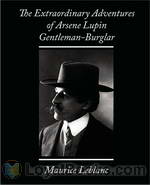 The Extraordinary Adventures of Arsène Lupin, Gentleman-Burglar
The Extraordinary Adventures of Arsène Lupin, Gentleman-Burglar
Two writers, famous in their own countries for creating immortal characters: Sir Arthur Conan Doyle in England and Maurice Leblanc in France. Their literary creations, Sherlock Holmes and Arsene Lupin are at two ends of the criminal spectrum. Holmes is a sleuth while Lupin is a burglar. When Maurice Leblanc introduces Sherlock Holmes in one of his Arsene Lupin stories, Conan Doyle is outraged. He sues Leblanc, who promptly changes the character's name to “Herlock Sholmes” and continues featuring... | |
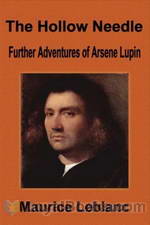 The Hollow Needle: Further Adventures of Arsène Lupin
The Hollow Needle: Further Adventures of Arsène Lupin
Arsène Lupin returns in a wonderful story of disguises, love, and of course treasure. Once again, Lupin crosses paths with the famous Holmlock Shears. But this time Arsène matches wits with Isidore Beautrelet, Sixth-form Schoolboy. Every step that Lupin takes has Beautrelet right on his heels. Has Lupin finally met his match? Will Beautrelet discover the secret of the Hollow Needle? And has the gentleman burglar met another match as well, one who will lead him away from his life of crime forever? | |
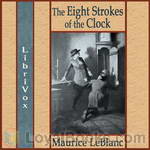 The Eight Strokes of the Clock
The Eight Strokes of the Clock
The Eight Strokes of the Clock is a collection of eight short stories by Maurice Leblanc. The stories have his most famous creation, Arsène Lupin, gentleman-thief, as main character. The eight stories, even though independent, have a leading thread: Lupin, under the name of Serge Rénine, trying to conquer the heart of a young lady, travels with her, solving eight mysteries on the way. | |
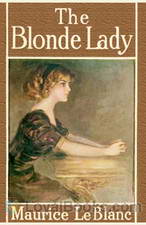 The Blonde Lady
The Blonde Lady
In “The Blonde Lady, being a record of the duel of wits between Arsène Lupin and the English detective” – original title “Arsène Lupin contre Herlock Sholmes” – the gentleman-burglar once more meets his enemy, the English detective Herlock Sholmes. If in the last story of “Arsène Lupin, gentleman-burglar” Sherlock Holmes arrives too late (the name was at a later date changed to Herlock Sholmes in reply to complaints and threats by Conan Doyle regarding copyrights), in the two stories that compose “The Blonde Lady” these two great intellects are bound in opposite directions... | |
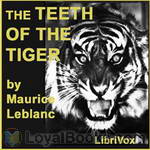 The Teeth of the Tiger
The Teeth of the Tiger
Maurice Leblanc delivers another Arsene Lupin adventure set in World War I. | |
 The Confessions of Arsene Lupin
The Confessions of Arsene Lupin
A collection of nine stories - or confessions - of the celebrated gentleman thief Arsene Lupin | |
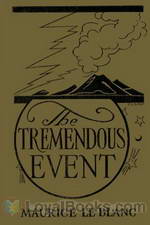 The Tremendous Event
The Tremendous Event
| |
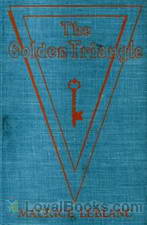 The Golden Triangle The Return of Arsène Lupin
The Golden Triangle The Return of Arsène Lupin
| |
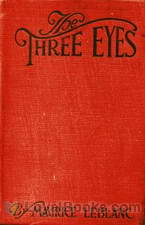 The Three Eyes
The Three Eyes
| |
 The Secret of Sarek
The Secret of Sarek
| |
 The Frontier
The Frontier
| |
By: Albert Einstein (1879-1955) | |
|---|---|
 Relativity: The Special and General Theory
Relativity: The Special and General Theory
Einstein wrote this book for people who are interested in understanding the Theory of Relativity but aren't experts in scientific and mathematical principles. I'm sure many people have heard about Einstein's Theory of Relativity, but most of them don't really know what it is all about. This book gives them a chance to know more about this very famous theory without the need to take a Physics course first. This book is divided into three parts. The first part explains what special relativity is all about... | |
 Sidelights on Relativity
Sidelights on Relativity
Sidelights on Relativity contains ETHER AND THE THEORY OF RELATIVITY, an address delivered on May 5th, 1920, in the University of Leyden; and GEOMETRY AND EXPERIENCE, an expanded form of an address to the Prussian Academy of Sciences in Berlin on January 27th, 1921. (Intro from Project Gutenberg) | |
 The Meaning of Relativity Four lectures delivered at Princeton University, May, 1921
The Meaning of Relativity Four lectures delivered at Princeton University, May, 1921
| |
 Relativity: The Special and the General Theory A Popular Exposition, 3rd ed.
Relativity: The Special and the General Theory A Popular Exposition, 3rd ed.
| |
By: Founding Fathers of the United States | |
|---|---|
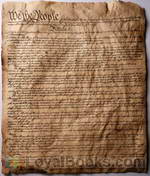 The Constitution of the United States of America, 1787
The Constitution of the United States of America, 1787
The Declaration of Independence was signed on July 4, 1776. It announced that the thirteen American colonies, who were at war with Great Britain in the American Revolutionary War, no longer considered themselves part of the British Empire. They now called themselves a new nation, The United States of America. This famous document went on to become a well-known keystone of the human rights movement. However, the newly formed state had no real identity or philosophy and were merely a loose collection of states that had freed themselves from colonial rule... | |
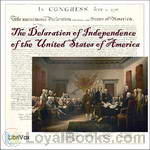 The Declaration of Independence of the United States of America
The Declaration of Independence of the United States of America
Declaration of Independence is the document in which the Thirteen Colonies declared themselves independent of the Kingdom of Great Britain and explained their justifications for doing so. It was ratified by the Continental Congress on July 4, 1776. | |
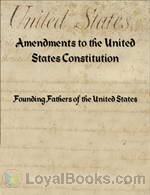 Bill of Rights & Amendments to the US Constitution
Bill of Rights & Amendments to the US Constitution
The Constitution has a total of 27 amendments. The first ten, collectively known as the Bill of Rights, were ratified simultaneously. The following seventeen were ratified separately. | |
By: Edgar Lee Masters (1868-1950) | |
|---|---|
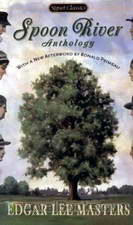 Spoon River Anthology
Spoon River Anthology
Two hundred and twelve residents of a small town tell their stories without fear of recrimination or ridicule. The only difference is that they're all dead! The two hundred and forty-four poems that form the Spoon River Anthology by Edgar Lee Masters is really a series of epitaphs about the citizens of a fictional town called Spoon River and deals with the “plain and simple annals” of small town America. Edgar Lee Masters grew up in a small town in Illinois. His father's financial problems forced the young Masters to abandon ideas of college and take up a job instead... | |
 Domesday Book
Domesday Book
| |
 Mitch Miller
Mitch Miller
| |
 Toward the Gulf
Toward the Gulf
| |
 Children of the Market Place
Children of the Market Place
| |
 Songs and Satires
Songs and Satires
| |
By: Ayn Rand (1905-1982) | |
|---|---|
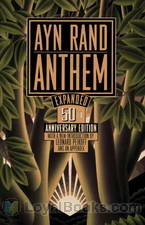 Anthem
Anthem
The title 'Anthem' is derived as an anthem to sense of self and self-governing thoughts. Anthem is a story of Equality 7-2521 who is a young man living in some unspecified future time and place. In this future era freedom and individual rights have been eradicated. The starring character of the novel is an inquisitive street cleaner. He lives in a society where people have lost their knowledge of individualism, to the extreme that people do not know words like 'I' or 'mine'. All the people live and work for their livelihood in collective groups, along with the people with power, namely the 'Councils'... | |
By: Johanna Spyri (1827-1901) | |
|---|---|
 Heidi
Heidi
Filled with descriptions of the magnificent Swiss Alps, the lives of the simple country folk who live in their picturesque peaks and valleys and the gentle and innocent days of childhood, Heidi by Johanna Spyri is a book that no child should miss reading. Since it first came out, it has captured the hearts of children (and adults) all over the world, been extensively filmed, televised and staged and translated from the original German into more than 60 languages. Heidiland, a theme park, is one of the big attractions in Zurich... | |
 Heidi (version 2 dramatic reading)
Heidi (version 2 dramatic reading)
"Heidi" takes us on a journey to the eventful childhood of a good-hearted girl from the Swiss Alps. A warm and loving story, full of touching moments, it reaches children and adults alike. It was written in 1880 and published in two parts: 1. Heidi's years of learning and travel. 2. Heidi makes use of what she has learned. This English translation from 1915 has "an especial flavor, that very quality of delight in mountain scenes, in mountain people and in child life generally, which is one of the chief merits of the German original... | |
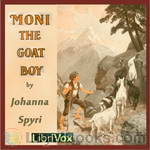 Moni the Goat-Boy
Moni the Goat-Boy
Moni is the goat boy who takes care of all the goats belonging to the people of Fideris, Switzerland. He loves to sing, yodel, and whistle while he romps with the goats all day long on the mountains. His favorite is a young kid named Mäggerli. One day Moni comes across a serious situation where he must keep a deceitful secret in order to protect Mäggerli from being killed. Will Moni risk the life of Mäggerli and tell the truth? This delightful short story teaches children that to trust God and do right is always better than being deceitful. | |
 Gritli's Children
Gritli's Children
| |
 Erick and Sally
Erick and Sally
| |
 Veronica
Veronica
Published in 1886, this novel encompasses a small community wherein Veronica, having lost her own mother, is “adopted” by a neighbour, Gertrude, who has a son of her own. The son, Dietrich, is learning how to become a saddler as his father before him. Their life is filled with hard work, but also some contentment. From the mother they now share, and two other matronly neighbours, Dietrich and Veronica learn valuable lessons about life. As the years pass, Dietrich and Veronica encounter trouble due to the mischief of two peers, and Dietrich more so as he is often tempted to frequent, along with others, the new tavern nearby. | |
 Cornelli
Cornelli
Cornelli lives in Iller-Stream with her widowed father, who calls on two Ladies of Culture to come spend time with Cornelli during one of his business trips, hoping that their influence will refine and improve his daughter. Instead, the ladies prove to have no real love for Cornelli, and she, being a sensitive soul, turns inward and becomes sullen and uncooperative. A boy who comes on a visit to Iller-Stream for his health befriends her, and this begins a chain of events that turn Cornelli's life right-side up again. | |
 Rico and Wiseli
Rico and Wiseli
| |
 Uncle Titus and His Visit to the Country
Uncle Titus and His Visit to the Country
| |
By: L. Leslie Brooke (1862-1940) | |
|---|---|
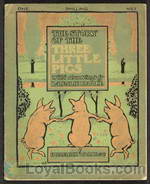 The Story of the Three Little Pigs
The Story of the Three Little Pigs
Leonard Leslie Brooke was a talented nineteenth/early twentieth century illustrator who also wrote some delightful children's books. He was well-known for his caricatures, portrait and landscape painting and sketches. He illustrated many children's books, especially those written by Andrew Lang. Some of his famous works are The Nursery Rhyme Book, The Golden Goose Book, Johnny Crow's Party and Ring O' Roses. The Story of the Three Little Pigs was published in 1904. Most readers would be familiar with this children's tale... | |
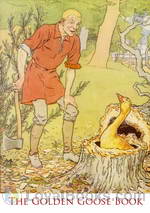 The Golden Goose Book
The Golden Goose Book
A charming little book full of the most gorgeous illustrations. We see a number of stories in which kindness is rewarded and selfishness is punished but Brooke squeezes a number of intriguing and quite bizarre twists and turns into the story so it is not nearly so predictable as you might imagine. Victorian moral fairy tales from a delightfully inventive mind. | |
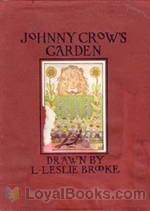 Johnny Crow's Garden
Johnny Crow's Garden
A beautifully illustrated children’s picture book featuring Johnny Crow who made a garden in which a variety of animals do bizarre things in rhyme. | |
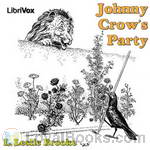 Johnny Crow's Party
Johnny Crow's Party
A beautifully illustrated children’s picture book. Listen to the narration while you read along viewing a variety of delightful animals doing strange things such as the kangaroo who tried to paint the roses blue. This is a follow up to Johnny Crow’s Garden. | |
By: Gene Stratton-Porter (1863-1924) | |
|---|---|
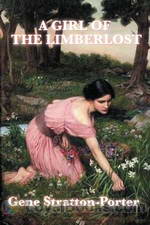 A Girl of the Limberlost
A Girl of the Limberlost
Elnora Comstock is a sixteen year old girl who lives on the edge of the famous Limberlost swamp in Indiana. Her widowed mother is a cold and bitter woman who deprives Elnora of all that a young girl's heart desires. The mother lives in a fog of depression caused by Elnora's father's tragic death on the night Elnora was born. She ekes out a living from a small poultry business, but refuses to exploit the resources of the forest land around her like the rest of their neighbors. Elnora is a brilliant student, but financial problems hinder her from continuing her education... | |
 Michael O'Halloran
Michael O'Halloran
The story of a plucky, optimistic newsboy, Michael O’Halloran, who has been orphaned from a young age and asks nothing of the world but to “Be Square!” This is a warm and joyous story of how Michael makes life sunnier for those around him, bringing joy to all who know him. | |
 The Harvester
The Harvester
The Harvester is one of Gene Stratton-Porter’s romantic novels which combine a love of nature, high moral ideals and a good plot. This is the story of a young man who lives in the country side with his dog and other animals and grows herbs to sell to medical drug supply houses. One evening, he has a vision of his Dream Girl and this is the story of his search for her and what happens when he finds her. | |
 Freckles
Freckles
Freckles is a young man who has been raised since infancy in a Chicago orphanage. His one dream is to find a job, a place to belong and people who accept him despite his youth and the disability of having only one hand. He finds this place in the Limberlost Swamp, as Mr. McLean’s Limberlost guard of precious timber.In the process, he discovers a love for the wilderness and animals he encounters every day on his rounds and a burning desire to learn about all the new birds and plants he sees on his rounds every day... | |
 A Daughter of the Land
A Daughter of the Land
Independent Kate Bates resents the fact that, as the youngest of a large family, she is expected to stay at home and help her parents while her brothers and sisters are free to pursue their desires. When she defies her family and leaves home, she finds that the path to independence is paved with hardships. | |
 Laddie
Laddie
Based on the author's own life, this book tells the story of "little sister". The youngest of eleven, she is unwanted in the beginning. The brother who loved her most, and whom she loved most in the world, is Laddie. She is almost lonely, and it's hard for her to study, so her comfort is nature. In an unforgettable way, which is funny and sad, little sister tells us her story. | |